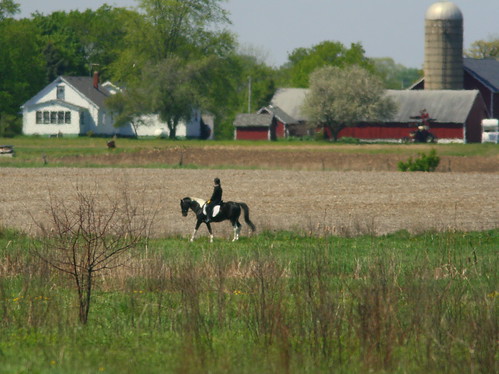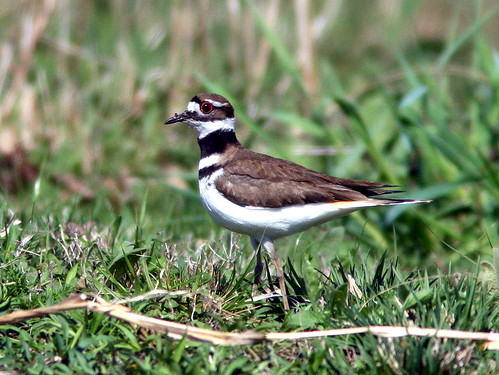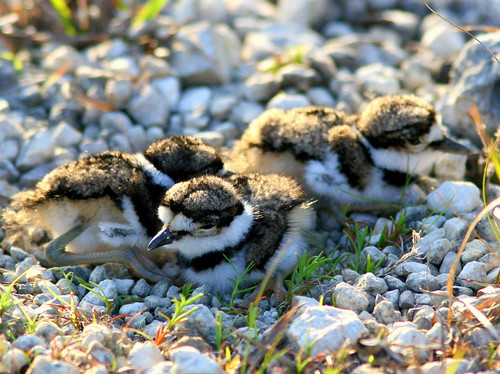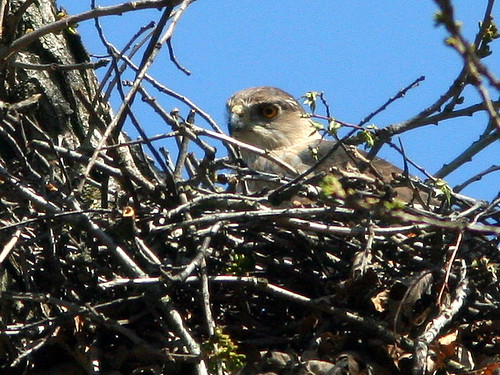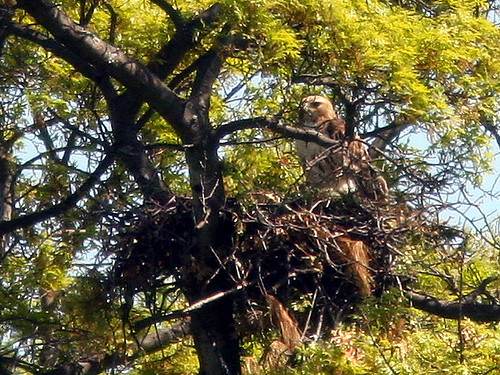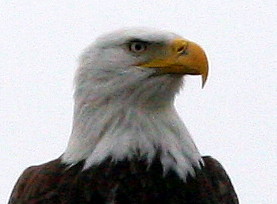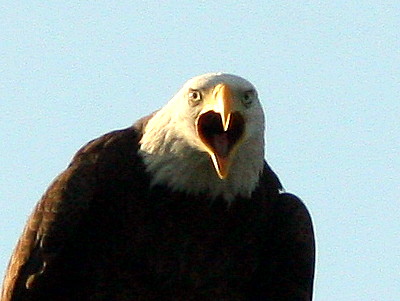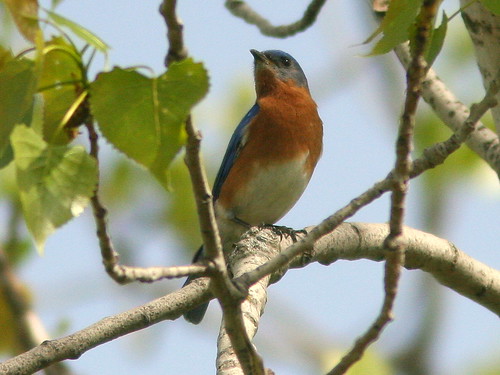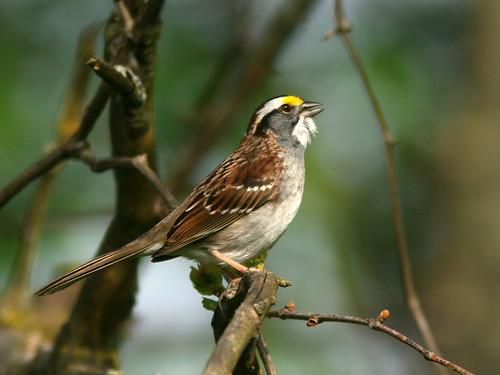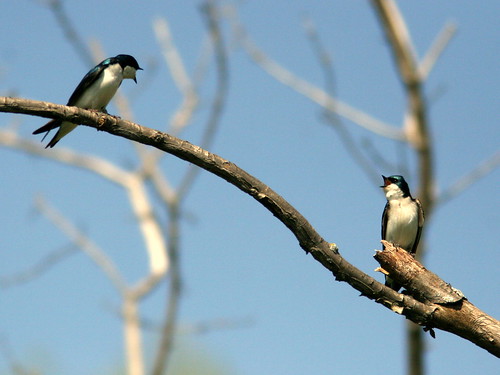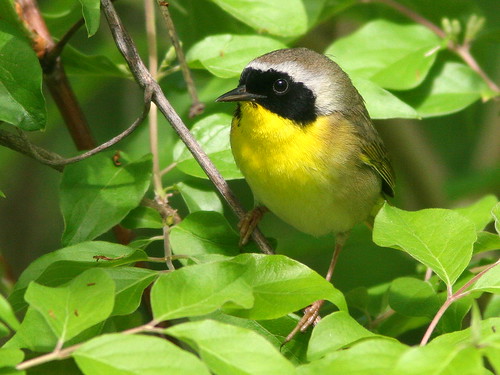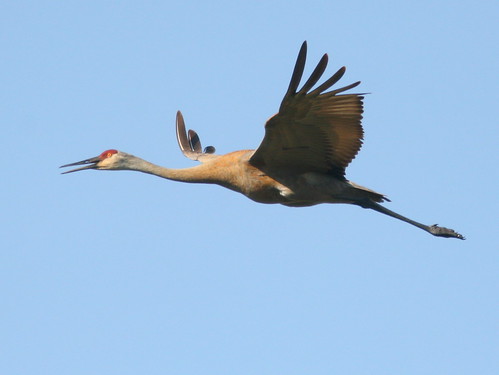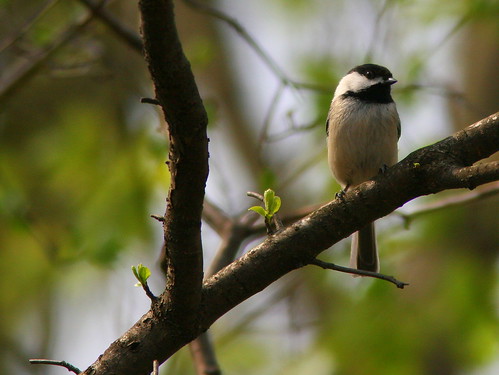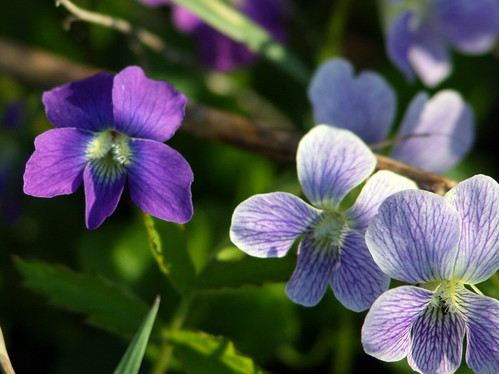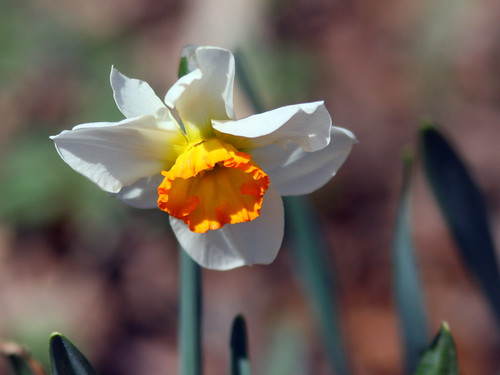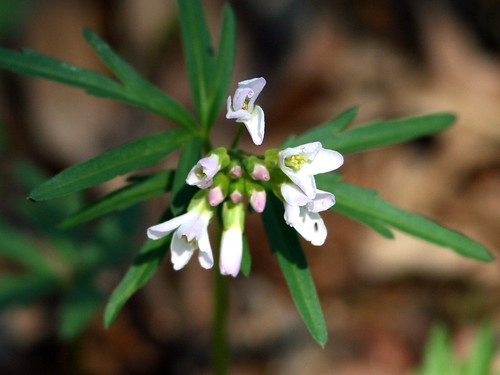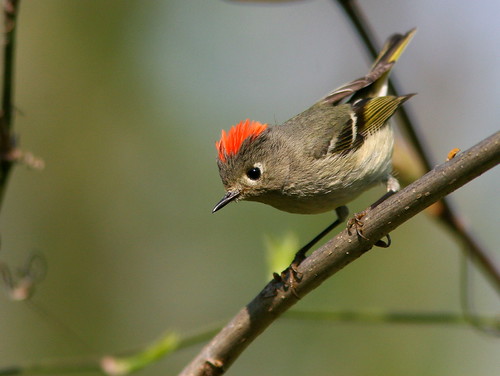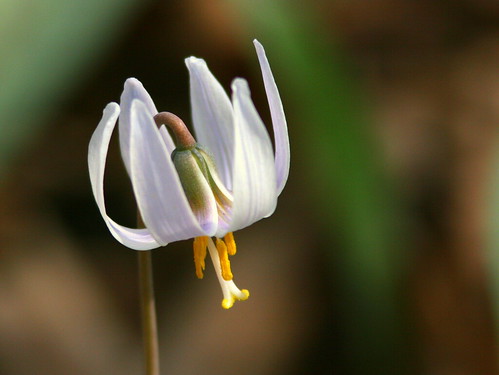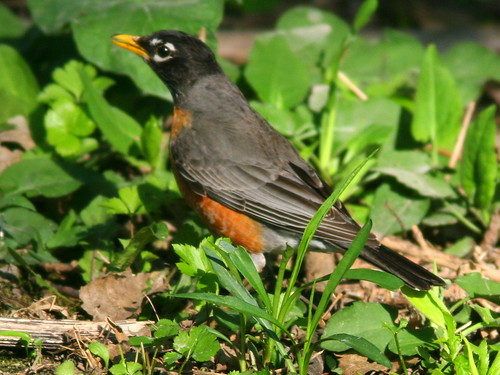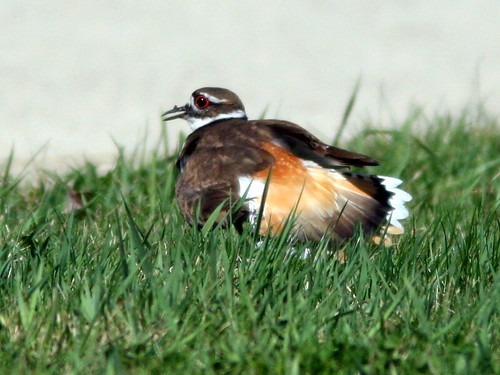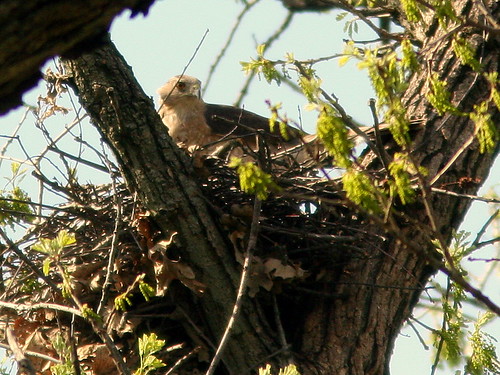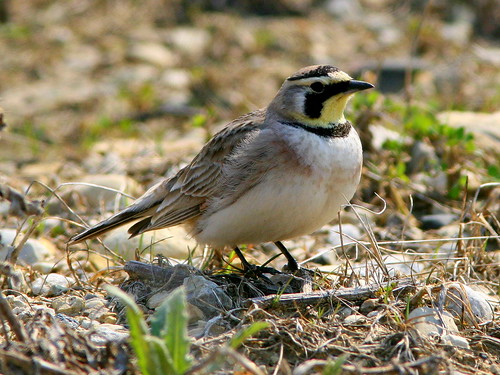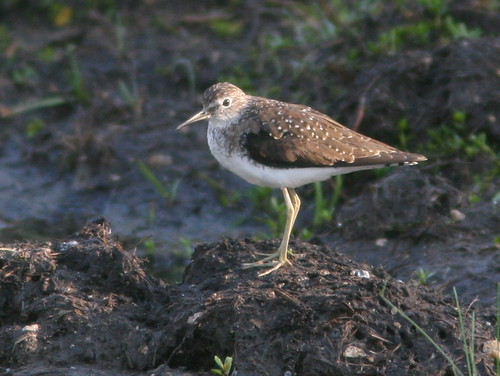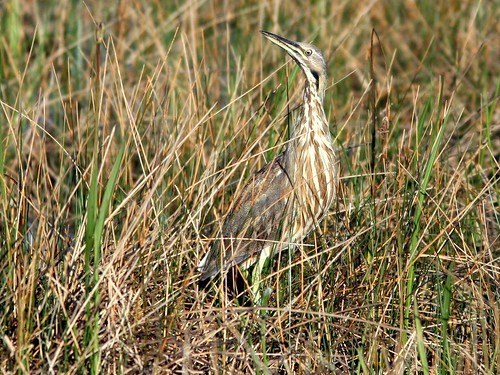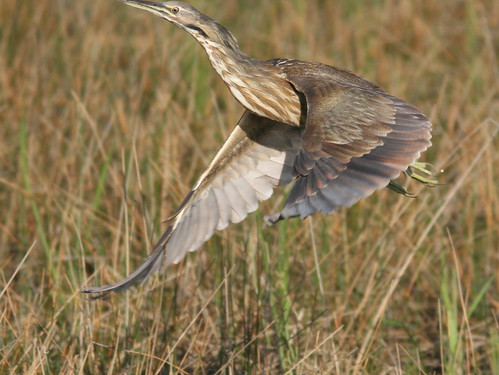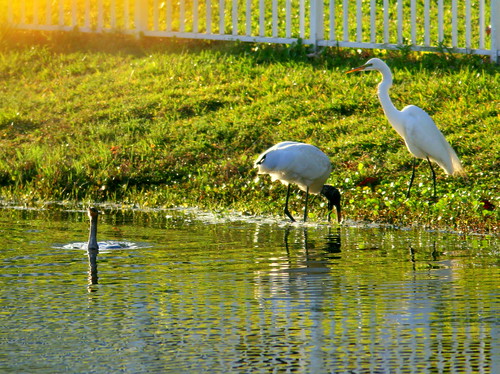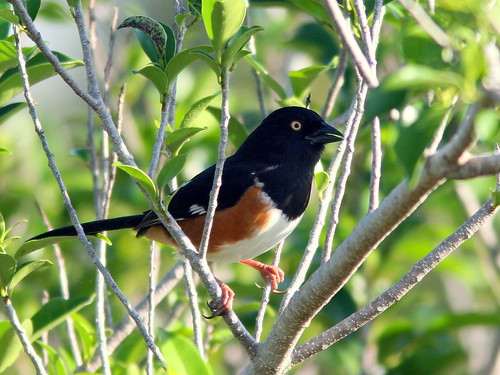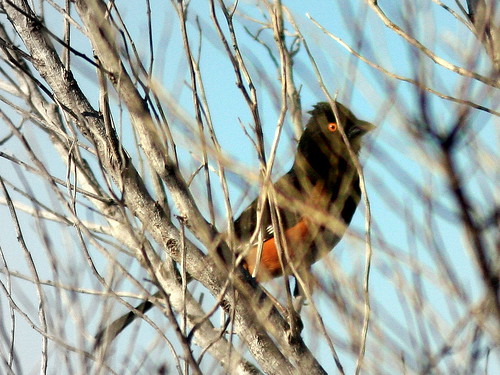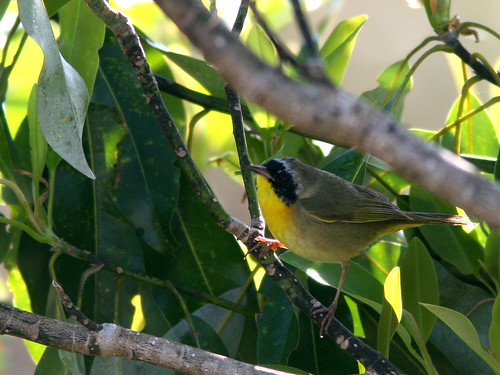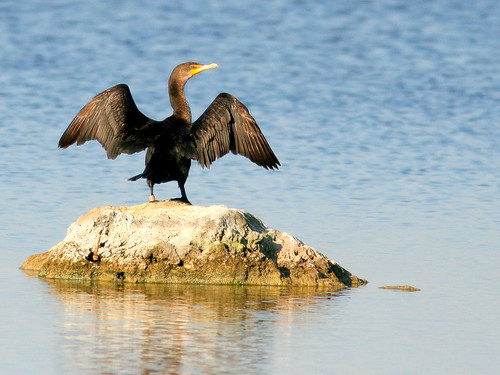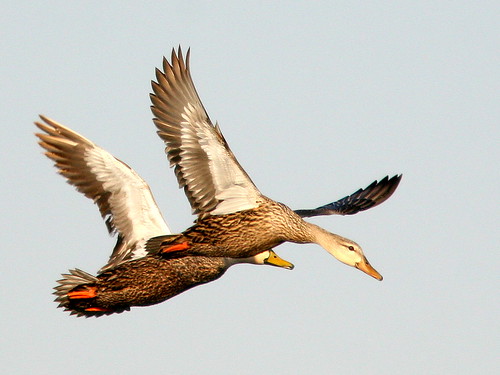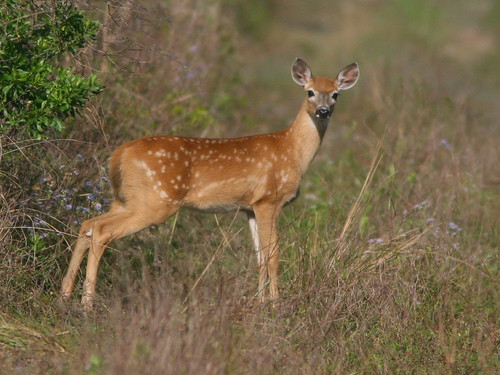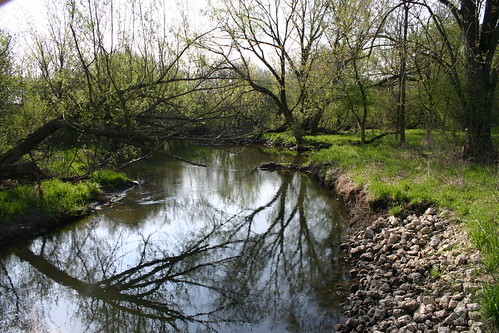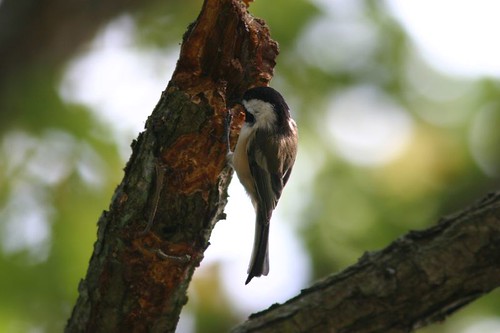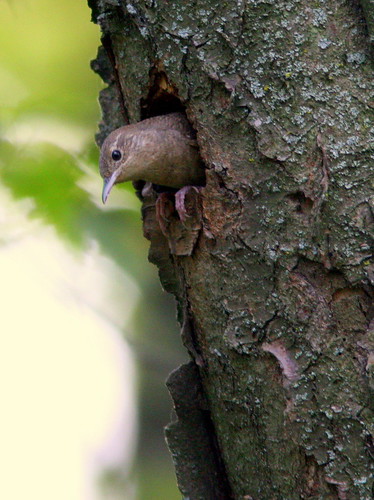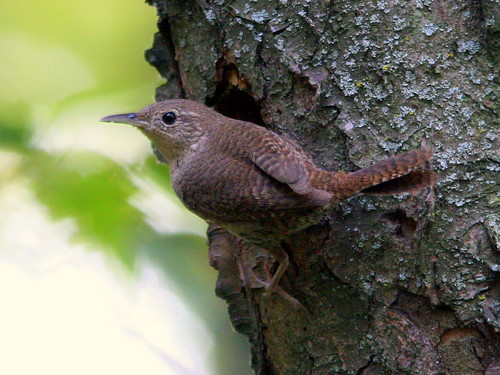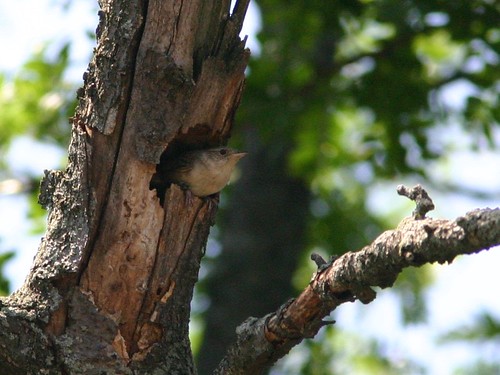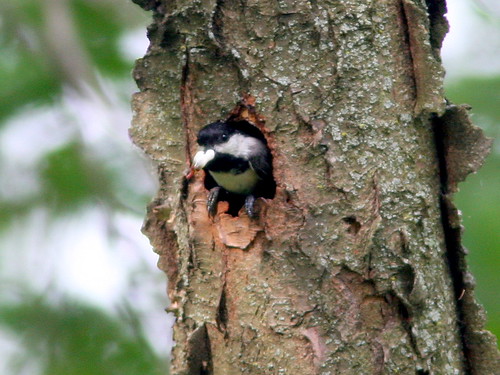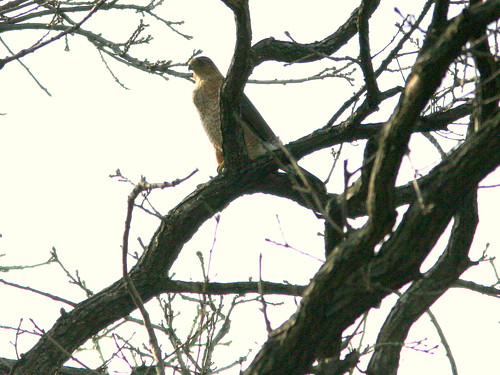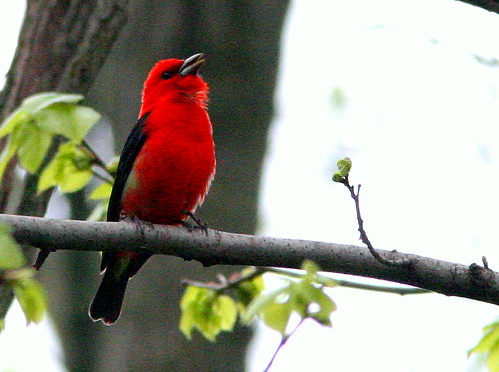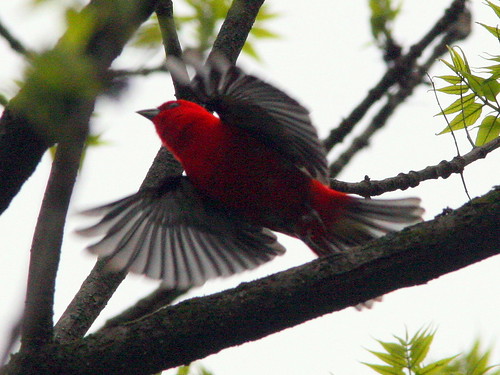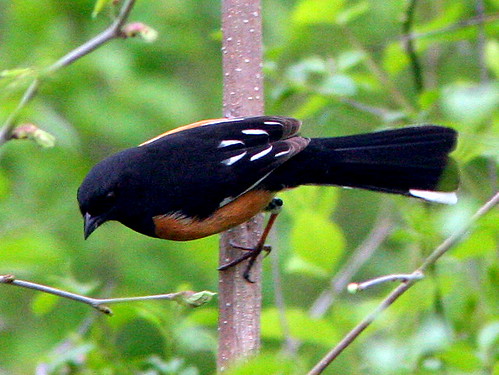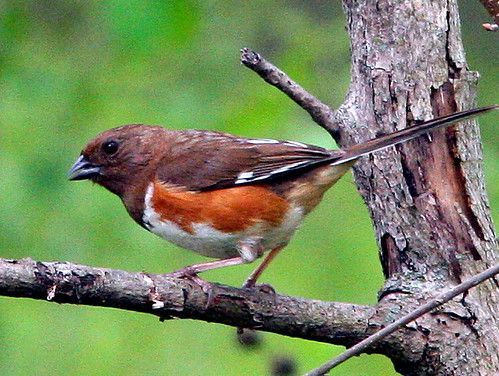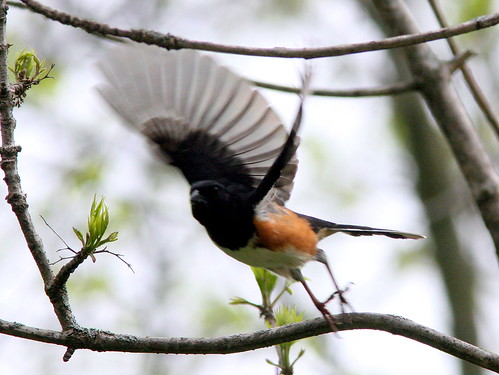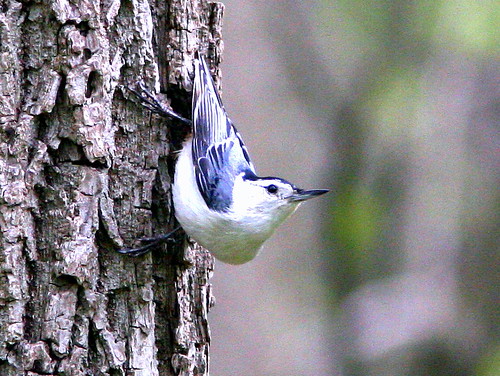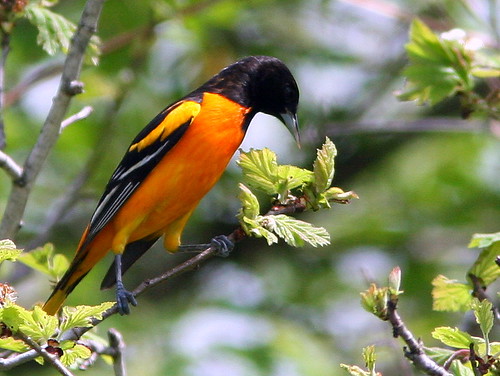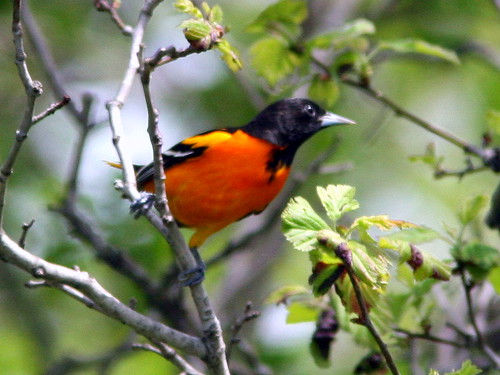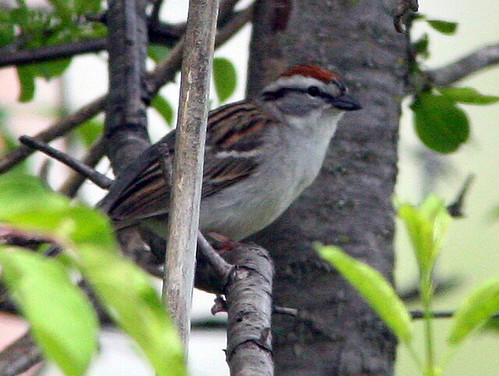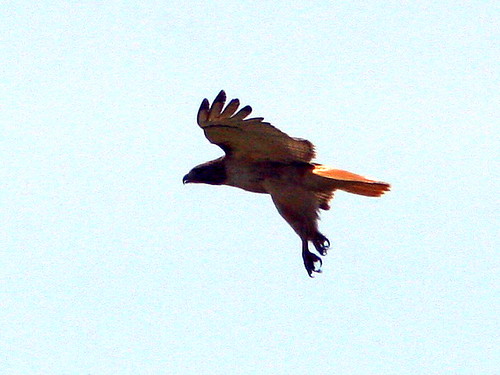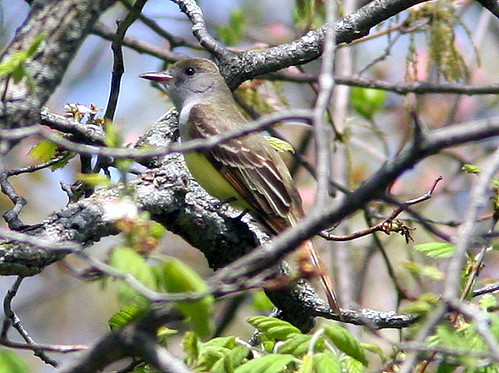Posted by: Ken @ 1:51 pm
The recently burnt field in the foreground, at Nelson Lake/Dick Young Forest Preserve in Kane County, Illinois, will soon harbor the nests of Savannah Sparrows and Sedge Wrens:
As a child of about 10, I often tried to locate active birds’ nests. This could be difficult, and it took patience and some careful behavioral observation. If I saw a bird gathering nesting materials or food, I would try to follow it to the nest site. Another clue was that birds with nestlings often carried white fecal sacs away from the nest after feeding the young, discarding them some distance away to keep the nest clean and also deter predators. I took photos of many nests with a liitle Kodak Brownie box camera, and hurried to get the film developed. I was almost always too close and they were out of focus:
Some nests were relatively easy to find. If I came across a Killdeer that tried to distract me and lead me away by calling and feigning injury, I knew its nest was nearby. I would simply walk directly opposite from the way that the Killdeer wanted me to go. The bird would become more frantic the nearer I approached the nest or its chicks. Since both eggs and young are so well camouflaged, I stepped very carefully so as not to crush them underfoot. Now I know that it is generally not a good idea to approach the nest of any bird, as this causes them great anxiety. You also may attract predators to the site.
Recently, this Killdeer ran across the path when I was walking the dog in nearby Hawk’s Bluff Park, in Batavia, IL:
It then showed me its bright orange rump and tail feathers as it fluttered on the ground, all the time calling “dee-dee-dee…” to attract my attention:
I did not try to pinpoint this nest, but I assume it was very close to where it was last year:
In Florida, using the same technique of “reverse logic,” I found these Killdeer chicks on the shoulder of a gravel road:
In contrast to the distraction display of the Killdeer, some birds defend their nest aggressively. In an earlier blog (The Goshawk and the Bear), I recalled the angry response of a Northern Goshawk when I innocently stood under its nest tree.
Cooper’s Hawks are known for sometimes attacking humans who simply walk under their nests. This one, incubating eggs at Hawk’s Bluff Park (so named for the persistence of nesting hawks in its oak trees) tends to ignore hikers on the trail beneath its nest:
Not far away, a Red-tailed Hawk keeps watch over its young:
Birds are unable to change their facial expressions to show emotion. Some birds of prey, notably eagles, have fierce-looking faces because of the bony ridge that shades their eyes produces a permanent frown. This Bald Eagle is nesting near our Florida home:
While his expression appears to be angry and fierce, this eagle is merely calling to his mate:
The plain face of the Eastern Bluebird conveys a sort of innocence…
...contrasting with the extravagant painted face of the White-throated Sparrow:
The body language of these two Tree Swallows leaves little doubt that they are engaged in a territorial dispute:
The eyes are often the most interesting feature of a photograph, and they must reflect some light in order to stand out. Black faces give me the most trouble, as dark eyes will blend into the plumage if they do not catch the light. Usually, yellowthroats skulk in the darkness of thickets, and their eyes melt into their black masks.
Luckily, this Common Yellowthroat briefly hops into the sunlight, and his eyes sparkle.
I will never forget the angry response of one Brown Thrasher that flew
right in my face. That was the last time I ever ventured near one of
their nests. Even today, the fire in the stare of a thrasher brings back
that childhood memory.
This Brown Thrasher was actually just
foraging when I photographed it, but oh those scary eyes!:
Spring is a sort of non-event in Florida, but it explodes on the scene here in Illinois. During the past two weeks the trees have gone from barren to green. Redbuds and fruit trees bloom profusely. I welcome the earliest wildflowers on the floor of the local woodlands. We try not to miss getting out every day to experience the rapid changes.
Cries of migrating Sandhill Cranes fill the air:
It wouldn’t be spring without Black-capped Chickadees…
…or a groundhog (Woodchuck) just out of its den:
Mourning Cloak butterfly adults survive through winter by hiding in hollow trees, under bark or in brush piles, hibernating in a state of suspended animation known as cryo-preservation. Many do not make it, especially if the winter is too damp and warm, or if their hiding place fails to protect them from fierce wind and predators. They are usually the first butterflies to appear in spring.
This Mourning Cloak’s wings are tattered, probably evidence of the hardships of the severe northern Illinois winter weather:
Some violets are blooming the first week in April…
…as are the Daffodils…
I was lucky to capture the extended firey crest of this Ruby-crowned Kinglet, excited by the presence of another singing male nearby:
The delicate White Trout Lily is one of my favorite early spring flowers:
Back in my my New Jersey childhood days of the 1940s, American Robins were rarely seen before the beginning of March, and were heralded as the first sign of spring. In response to climate change, they, like many other migrants, are spending winter farther north.
This male robin was engaged in a territorial battle with an interloper, while his mate gathered mud at the edge of a puddle:
The Wake Robin (Trillium) also blooms before the middle of April:
Killdeers already have laid their eggs close by last year’s nest site. This one performs a distraction display, writhing as if injured, and flashing its bright orange tail and rump to lure me away from the nest:
The pair of Cooper’s Hawks that I have been observing for the past three years is again nesting in Hawk’s Bluff Park, Batavia:
Near the hawk’s nest, a Hairy Woodpecker (distinguished from the smaller Downy Woodpecker by it longer bill and unbarred outer tail feathers) climbs an old oak:
Sparrows are some of my favorite subjects, maybe because seeing them takes patience rather than a lot of walking. This Song Sparrow sings his heart out:
The demure Field Sparrow, with a plain face and reddish beak, also puts a great deal of effort into its distinctive accelerating trilled whistle:
A Vesper Sparrow was singing on the roof of our condo early in the morning, and flew to a weedy spot near the road. I used the car as a blind to get my best views of this species to date:
While I watched the Vesper Sparrow, a Horned Lark happened by:
Posted by: Ken @ 1:58 pm
The boardwalk at Chapel Trail Nature Center:
Nearly all our birding is done in “patches,” places that are within a five minute walk or drive from our home. In Florida, they include portions of the Broward County Water Conservation Area adjacent to our subdivision (which we call the West Miramar ESL, for “Environmentally Sensitive Area”), and two nearby parks managed by the City of Pembroke Pines: Chapel Trail Nature Center and West Pines Soccer Park and Nature Preserve. In Illinois, our favorites are Dick Young/Nelson Lake Kane County Forest Preserve, and Jones Meadow and Hawk’s Bluff Parks, managed by the Batavia Park District.
Of course, visiting these accessible habitats doesn’t waste driving time and money. The best times to be out birding are usually at the height of rush hour traffic delays. While this habit of staying close to home may be eco-friendly, we do not do this just to save the planet.
An uncommon migrant, this Solitary Sandpiper forages in a roadside ditch near our home. Its long wings, designed for long-distance migration, extend well past its short tail:
Visiting the same places day after day is not an efficient way to check off rarities, although a rare bird may show up just because you increased your odds of seeing it by being there so often. However, it does help put you in tune with the cycles of nature, as you see the subtle changes that may be missed by more casual visitors. As a kid in New Jersey during the 1940s, I remember the sound of the first Spring Peepers and the smell of Skunk Cabbage– and smelling the musk of hundreds of Garter Snakes as they emerged from hibernation, and the perfume of Citronella Ants as they swarmed in mid-summer. These ants tend aphids and “milk” them for the honeydew they produce. Thinking they must therefore be very sweet, my cousin and I tasted the ants and found them to be quite bitter! Back then, seeing the first robin was a great event, although now the species has extended its winter range northward and it is not unusual to see flocks all year.
A Northern Cardinal wants his picture taken– who can refuse?
Another advantage of making repeated visits to the same patch of wild land is that you learn to ignore so many “false alarms:” the broken branch that looks like a Great Horned Owl, the bear-shaped boulder, and the snake-like root that gave you a scare the first time you almost stepped on it– all may be conveniently ignored.
Something different — an American Bittern stands out among the familiar reeds at Chapel Trail Nature Center:
The bittern takes flight:
This morning, we watched the behavior of a Great Egret, a Wood Stork and a Double-crested Cormorant as the threesome fished together along the shore of our lake. The stork, which feeds by blind touch, benefited from fish that were driven near shore by the cormorant, and the egret shared the table and probably shooed some prey out to the cormorant:
When I was a kid, my bird books called them “Red-eyed Towhees,” but this Eastern Towhee at Chapel Trail has straw-colored eyes, characteristic of the race in Florida and southern Georgia:
I have also seen the northern red-eyed variety as a migrant in South Florida. Here is an example of one with intermediate eye color, in the West Miramar ESL: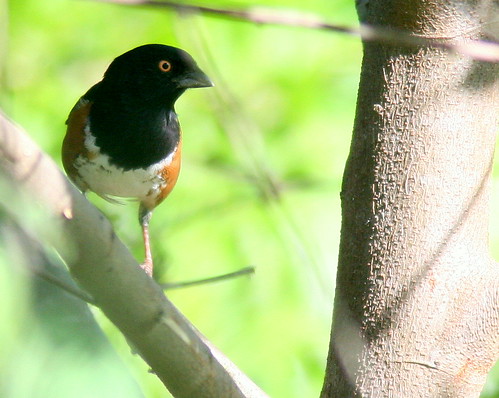
For comparison, here is the northern red-eyed race I photographed in Illinois:
Only a few blocks from home, these Black Vultures assemble in dinner dress uniforms to feast on a road-killed Opossum: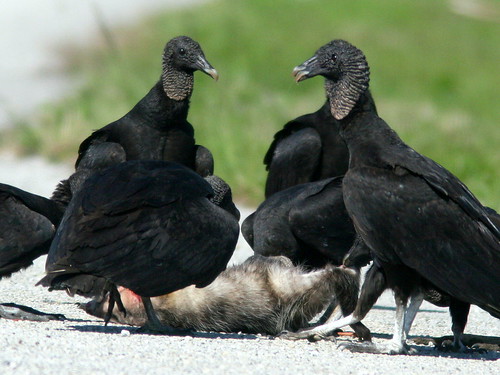
A Prairie Warbler brightens up the morning walk:
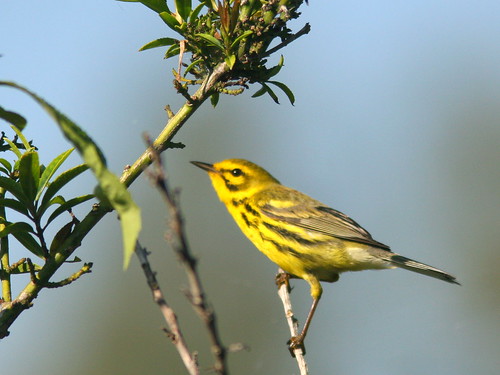
.
A male Common Yellowthroat is a difficult subject as it lurks in the shrubbery next to the boardwalk at Chapel Trail:
The yellowthroat’s somber mate perches in the reeds: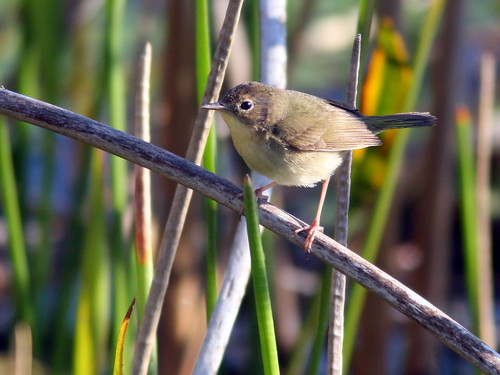
Back-lit by the morning sun, an Anhinga captures the rays to dry its feathers:
Like an emblem dominating a boulder at a lake in our local wetland, a cormorant does the same:
We notice that Blue Jays in South Florida commonly mimic the calls of Red-shouldered Hawks, a sound I never heard in New Jersey, when this Hawk was rarely seen (or heard) that far north.
A jay gathers nesting material in a neighbor’s palm tree: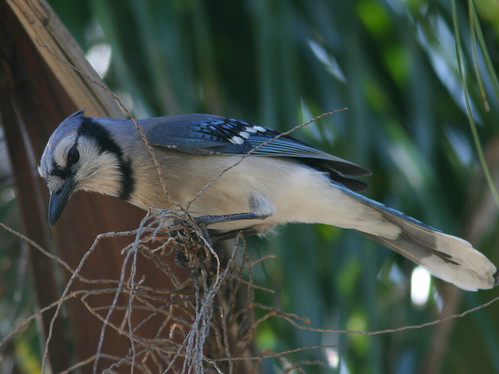
This brace of Mottled Ducks provide a great photo-op by flying towards me. The female, in foreground, has an orange bill, while the male’s is more yellow:
Deer are not as common near our Florida home as they are up north, so seeing this half-grown Whitetail fawn is a treat:
A fresh Bobcat track reminds us of the wildness of this place, only a block from our home:
Hawk’s Bluff Park, one of our Illinois birding “patches,” is a 30 acre strip of maturing second-growth oak woodlands and prairie that runs along Mill Creek in Batavia. It includes a playground, small basketball court, fitness track, picnic shelter, and a fishing deck. About a mile of trails loop through the woods and traverse three areas of recovering tallgrass prairie. It is nicely managed, but one aspect of its maintenance causes us some concern.
Mill Creek, looking south, downstream , April 2008:
Mill Creek, downstream, March 16, 2010. The old tree to the left has fallen into the creek, but little else has changed since last spring, now awaiting the burst of new growth:
Mill Creek, upstream view, April, 2008: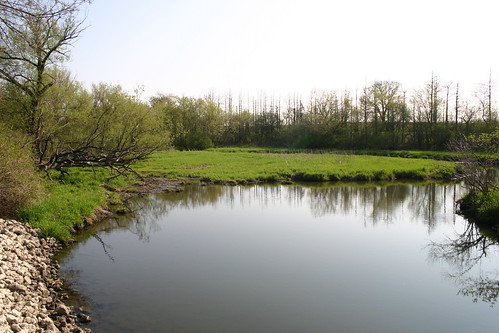
Mill Creek, upstream, March 16, 2010. Streamside vegetation was generally not disturbed. Except for the seasonal lack of green grass and leaves, there has been no substantial change:

Along wood-chip path, May 14, 2008 just before official opening of Hawk’s Bluff Park:
March 19, 2010– Note the how the understory has been cleared of standing dead wood, and the tangle of saplings has been thinned: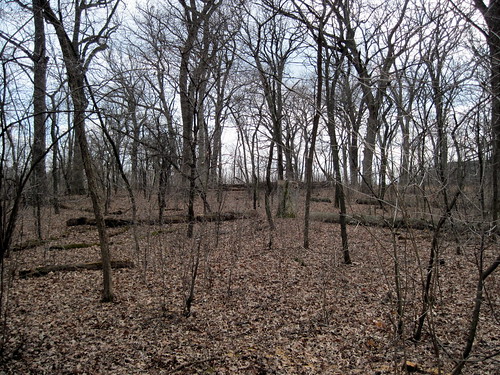
The wooded area has recently undergone fairly intensive pruning and culling. Many saplings that compete with the large trees have been removed from the understory. Fire danger is thus reduced, and more light will reach the wildflowers on the forest floor. Dead and unhealthy trees were cut down and chipped on-site and used to improve the unpaved trails.
The Emerald Ash Borer was introduced into the United States only eight years ago. This very invasive insect is a threat to native White Ash trees, considered the best wood for baseball bats, and famous because of the Louisville Slugger. The only effective control measure for the exotic borers has been to cut down all infected trees.
While pruning and thinning may be essential to maintain the health of these public wild lands, the removal of dead and dying snags has had an adverse effect. Sick and dead trees are cafeterias for woodpeckers, nuthatches, chickadees and other birds that glean and dig for insects. Old hollow limbs and woodpecker holes are recycled as homes for other cavity-dwellers. Now, I fear that there will be a shortage of nest holes.
Below are photos of four separate nest cavities that have been eliminated in the pruning process. These are only the ones that I found by accident.
Black-capped Chickadee explores nest hole, 2009:
House Wren pokes head out of a second nest cavity, August 4, 2009:
House Wren at entrance of same nest, August 4, 2009:
House Wren nesting in an old woodpecker hole, June, 2008:
Chickadee emerging from a fourth nest hole with fecal sac, June 6, 2009:
A pair of Cooper’s Hawks nested in this tree last year, and in nearby trees for the past four years or more. During the past two weeks I have found both of them roosting in and near this tree: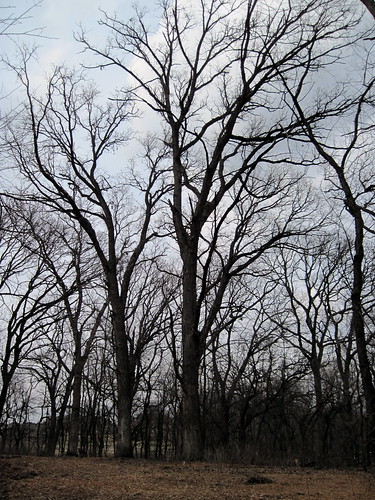
Here is last year’s nest:
The adults often take concealed perches. Uncannily, if I have my camera, I fail to see them until they flush. Several times, when I was walking the dogs without my camera, they have posed in plain sight! This is the best shot I have gotten so far. This bird has eaten recently and well– notice its protruding full crop:
Mowing of the prairie grass has probably enhanced the success of ground-nesting species, such as the Killdeer, whose nest I photographed on May 12, 2009: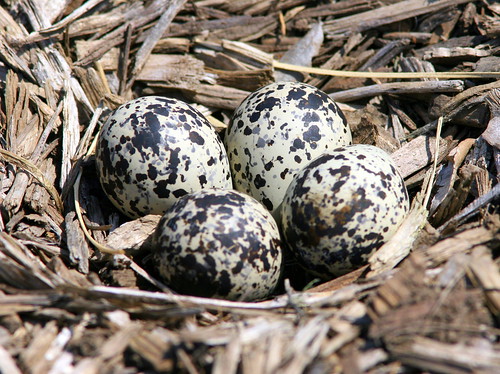
Other Blog Posts that reference Hawks Bluff Park
Spring
birding: Something new every day
Grandchildren
Explore Hawks Bluff Park
Browsing a
Virtual Birding Library
My
birding companion has a new little sister
Summer
at Hawk’s Bluff Park, Batavia, IL
We set out this morning to Lippold Park in Kane County, Illinois, hoping to see our first Scarlet Tanager of the year. For the past week we searched for them in vain. Today we were not disappointed, for within 15 minutes we heard its husky “robin with a sore throat” song. As it was early and overcast, and the bird kept to the treetops, nearly all my photos were badly backlit and showed little color or detail.
This shot was about the best I got:
He took flight on translucent wings:
We logged 37 bird species, several heard but not seen, and obtained few good photos because of the light conditions and the fact that many were small guys flitting in the treetops. A pair of resident Eastern Towhees were courting and calling loudly. They let us get quite close.
The male showed off the pattern on his back:
In the female towhee, black is replaced with warm brown, no less beautiful:
The male towhee provided me with my second flight capture of the morning:
A White-breasted Nuthatch peered inquisitively from his upside-down perch:
Later in the afternoon, I walked our daughter’s family Tibetan Mastiff, Agramonte, and birded Hawk’s Bluff Park in Batavia. Located along the western bank of Mill Creek, this new small park is host to varied habitats including a tall oak woodland, grasslands, stream and marsh. This afternoon’s dog walk yielded 43 bird species. The light had improved, so I did get a few nice photos.
A Baltimore Oriole gleaned the buds of a small tree, apparently eating insects, flower petals and drinking nectar.nectar:
This was the first oriole to hold still for a photo since we saw our first arriving migrant about a week ago:
Several Nashville Warblers with distinctive blue-gray heads and conspicuous shite eye rings flitted about in the understory: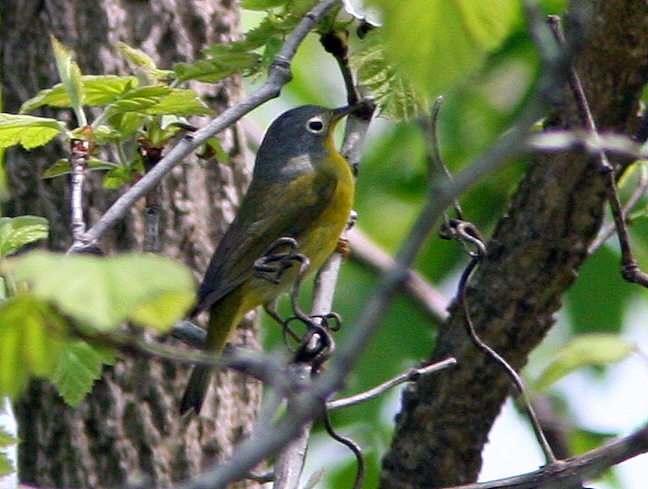
A Chipping Sparrow peered out from the shrubbery:
On the walk back to our daughter’s home, I watched as three Red-tailed Hawks interacted, perhaps competing for a mate. A pair of Common Grackes harassed them as they flew to a nearby rooftop.
This Redtail screamed incessantly:
One of the grackles landed on top of a Redtail and appeared to be picking at a feather:
This Great Crested Flycatcher, hiding among the branches, was a nice find:
Here is a slide show of images I have captured at Hawk’s Bluff Park, some before a playground was added and its dedication last year–













